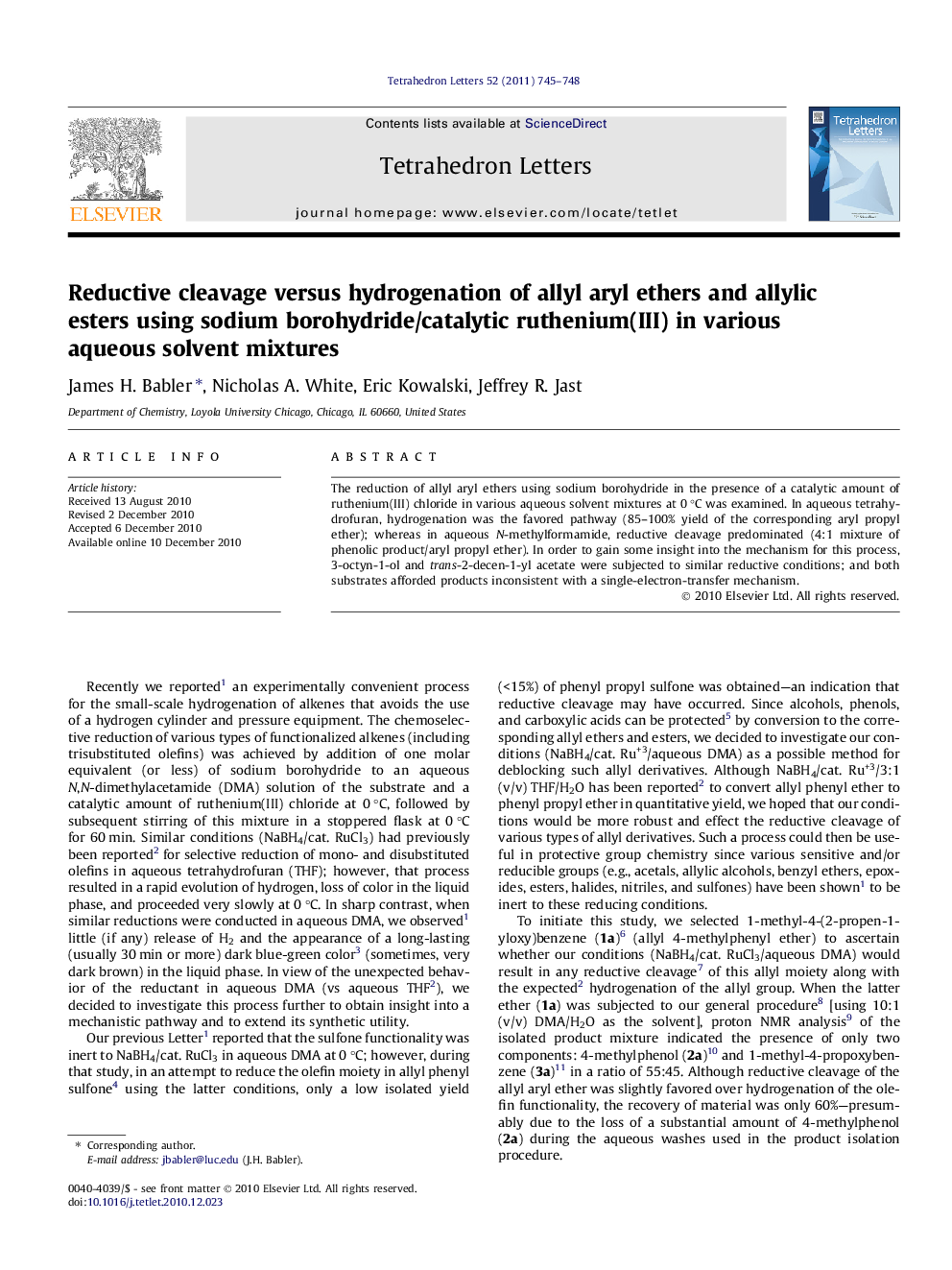| Article ID | Journal | Published Year | Pages | File Type |
|---|---|---|---|---|
| 5269310 | Tetrahedron Letters | 2011 | 4 Pages |
Abstract
The reduction of allyl aryl ethers using sodium borohydride in the presence of a catalytic amount of ruthenium(III) chloride in various aqueous solvent mixtures at 0 °C was examined. In aqueous tetrahydrofuran, hydrogenation was the favored pathway (85-100% yield of the corresponding aryl propyl ether); whereas in aqueous N-methylformamide, reductive cleavage predominated (4:1 mixture of phenolic product/aryl propyl ether). In order to gain some insight into the mechanism for this process, 3-octyn-1-ol and trans-2-decen-1-yl acetate were subjected to similar reductive conditions; and both substrates afforded products inconsistent with a single-electron-transfer mechanism.
Related Topics
Physical Sciences and Engineering
Chemistry
Organic Chemistry
Authors
James H. Babler, Nicholas A. White, Eric Kowalski, Jeffrey R. Jast,
